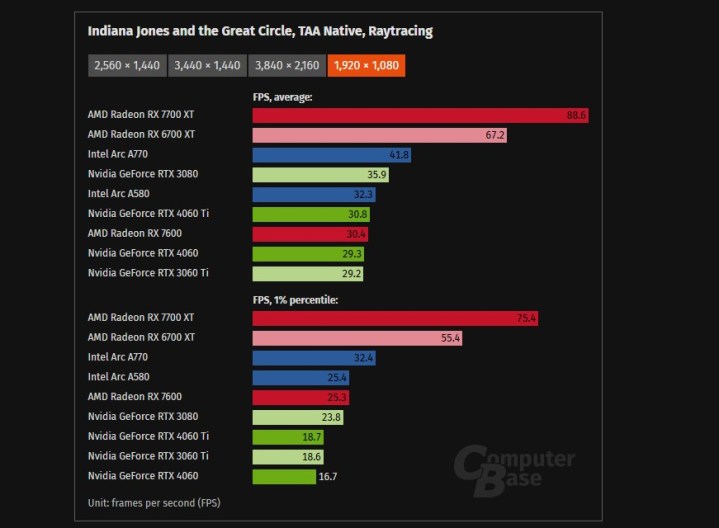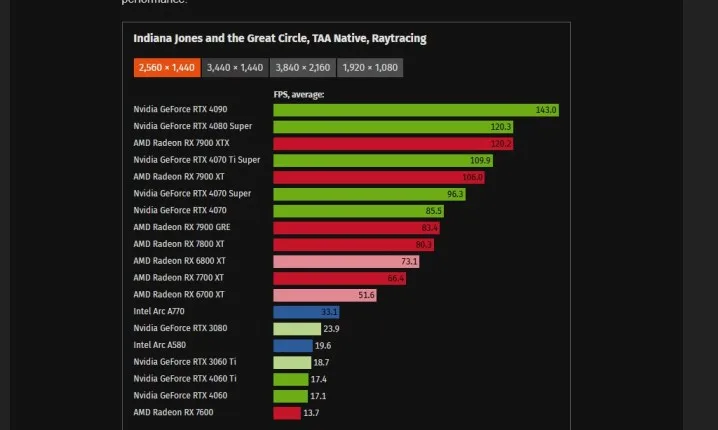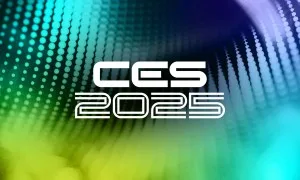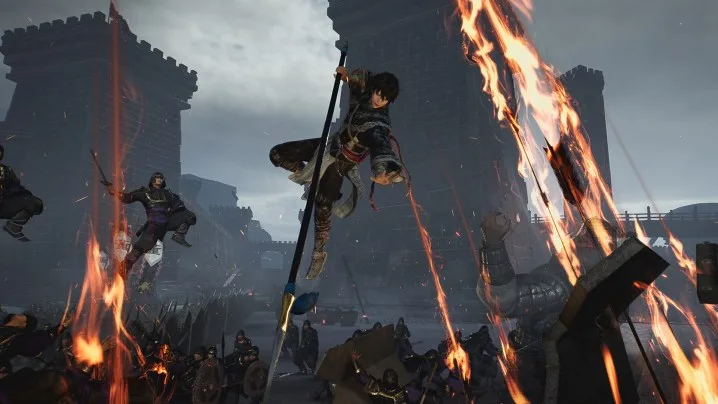Nvidia may have underestimated the demands of Indiana Jones and the Great Circle. This title is not only sponsored by Nvidia due to its utilization of full ray tracing, which is anticipated to launch on December 9, but it also showcases a significant issue: several of Nvidia’s top-tier graphics cards struggle to deliver playable frame rates, primarily due to limited VRAM capacity.
Computer Base ran benchmarks across various GPUs at maximum graphics settings and revealed a concerning trend. Any graphics card with less than 12GB of VRAM struggled to achieve even 30 frames per second (fps). This led to surprising comparisons, as illustrated in the accompanying chart. For instance, the Intel Arc A770, targeted at budget-conscious gamers, outperformed the RTX 3080—a card that was once a leader in 4K gaming. The reason? The A770 boasts 16GB of VRAM compared to the RTX 3080’s 10GB.

Nvidia encountered criticism when launching its latest generation of GPUs, especially for lower-end models that come with only 8GB of VRAM. The company defended this decision, particularly regarding the RTX 4060 Ti, asserting that 8GB should suffice for contemporary gaming provided it’s paired with a speedy memory interface. However, performance data from Indiana Jones and the Great Circle suggests a different reality.
This becomes particularly problematic at 1080p, where options for high VRAM graphics cards are limited. Benchmarks show that even the previous-gen RX 6700 XT can achieve 60 fps at 1080p, while Nvidia’s RTX 4060, RTX 4060 Ti, RTX 3080, and RTX 3060 Ti barely hit 30 fps.

This situation is concerning because Indiana Jones and the Great Circle mandates dedicated ray tracing capabilities. Even with the ray tracing mode disabled, the game continues to use ray tracing features, and players have no option to turn it off. While Nvidia GPUs generally handle ray tracing more effectively than AMD’s, particularly when compared to AMD’s RX 6000 series, the higher VRAM of the RX 6700 XT enables it to perform better in this game.
Nvidia mentioned that Indiana Jones and the Great Circle can still look good at lower graphics settings—a sentiment echoed in my own experiences with the game. However, the primary issue remains VRAM capacity. This testing indicates that a $700 RTX 3080 may require sacrifices in visual fidelity at 1080p, whereas a $400 RX 6700 XT does not face this limitation. The game does support DLSS 3, which includes Super Resolution and Frame Generation, to enhance performance, but these features cannot compensate for hitting VRAM limits at the selected resolution.
This isn’t the only case where games have struggled on 8GB graphics cards, but it could be one of the most pronounced examples. In recent years, games such as Resident Evil 4, The Last of Us Part One, and Halo Infinite have had difficulties on 8GB cards. However, with Indiana Jones and the Great Circle, the challenges are even more severe. Here’s hoping Nvidia increases VRAM limits with the upcoming RTX 50-series GPUs.











